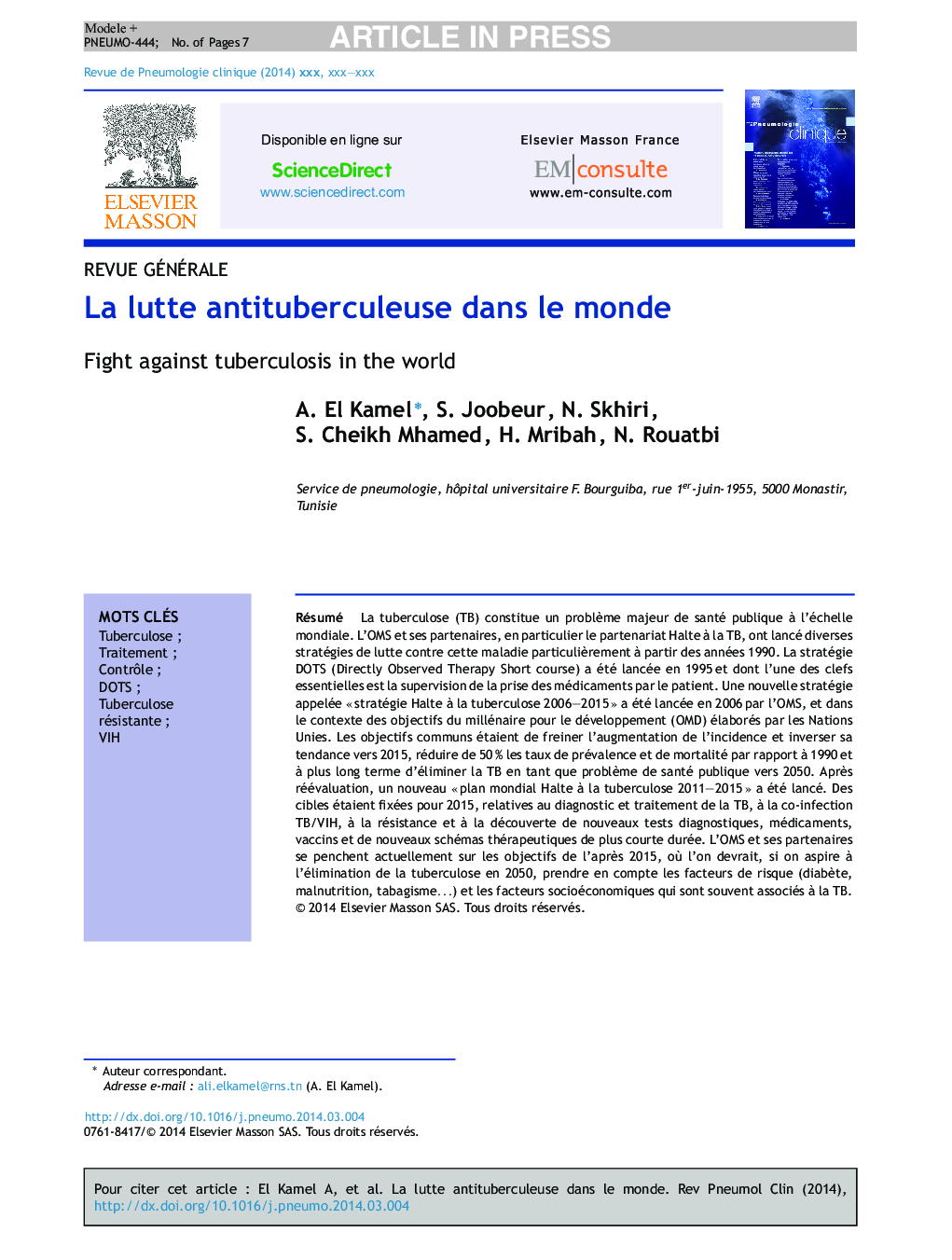| Article ID | Journal | Published Year | Pages | File Type |
|---|---|---|---|---|
| 3419420 | Revue de Pneumologie Clinique | 2015 | 7 Pages |
Abstract
Tuberculosis (TB) in a major health problem in the world. WHO and its partners especially, the stop TB partnership launched numerous strategies against TB especially in the 1990. Strategy DOTS (directly observed therapy short course) was launched in 1995. One main key was the direct supervision of drug intake by patients. Progress was achieved but it was insufficient. A new strategy called “Stop TB Strategy 2006-2015” was launched in 2006 in the context of Millennium Development Goals (MDG) elaborated by United Nations. The common goals were to halt and start to reverse the incidence of TB, reduce the prevalence and death rate by 50% compared to their level in 1990 by 2015 to eliminate TB as a public health problem by 2050. The end of 2010 marks the mid-point of the Global Plan and is an obvious time to update it and take into account actual progress with a focus on the 2015 to reach goals. So an updated Global Plan to stop TB 2011-2015, was launched. Expected progress and targets were defined for 2015, in diagnosis and treatment, in co-infection TB/HIV, in drug-resistant TB and achievements expected in new tests for diagnosis, new medications, new vaccines and new regimens with shorter duration of treatment. WHO and partners have started discussions to define the new post 2015 strategy to TB control and elimination. Risk factors (diabetes, malnutrition, tobacco smokeâ¦) and socioeconomic factors, which are associated with TB, should be included in the new strategy to eliminate TB in 2050.
Related Topics
Health Sciences
Medicine and Dentistry
Infectious Diseases
Authors
A. El Kamel, S. Joobeur, N. Skhiri, S. Cheikh Mhamed, H. Mribah, N. Rouatbi,
